Have you ever wondered how to write a scenario for eLearning to be more engaging to keep the learners engaged? It is a real task! So, in this blog, we will discuss how to write a scenario.
Table of Contents
- Step 1: Identify your target audience
- Step 2: Identify learning needs and objectives
- Step 3: Select a situation for the scenario
- Step 4: Select the suitable scenario structure
- Step 5: Design your scenario
- Infographics
- Knowledge Check!
- Conclusion
- Frequently Asked Questions (FAQs)
- How to create scenario-based eLearning?
- How to identify the target audience for scenario-based eLearning?
- How can you select a scenario for eLearning?
There are a few requirements to create effective scenario based learning.
Step 1: Identify your target audience
Identifying the target audience is the first step in creating any eLearning course. Knowing the audience helps create a relevant, engaging, and effective situation that allows the learners to use their knowledge in real-world situations. Ask the following questions to collect data about your audience:
- Who are the learners, and their characteristics?
- What resources and pedagogical strategies to use?
- What types of learning constraints exist?
- What is the timeline for project completion?
- An SME with hands-on experience can help to find the answers to these questions. However, the best way to ensure this is to talk to one or more members of your target audience.
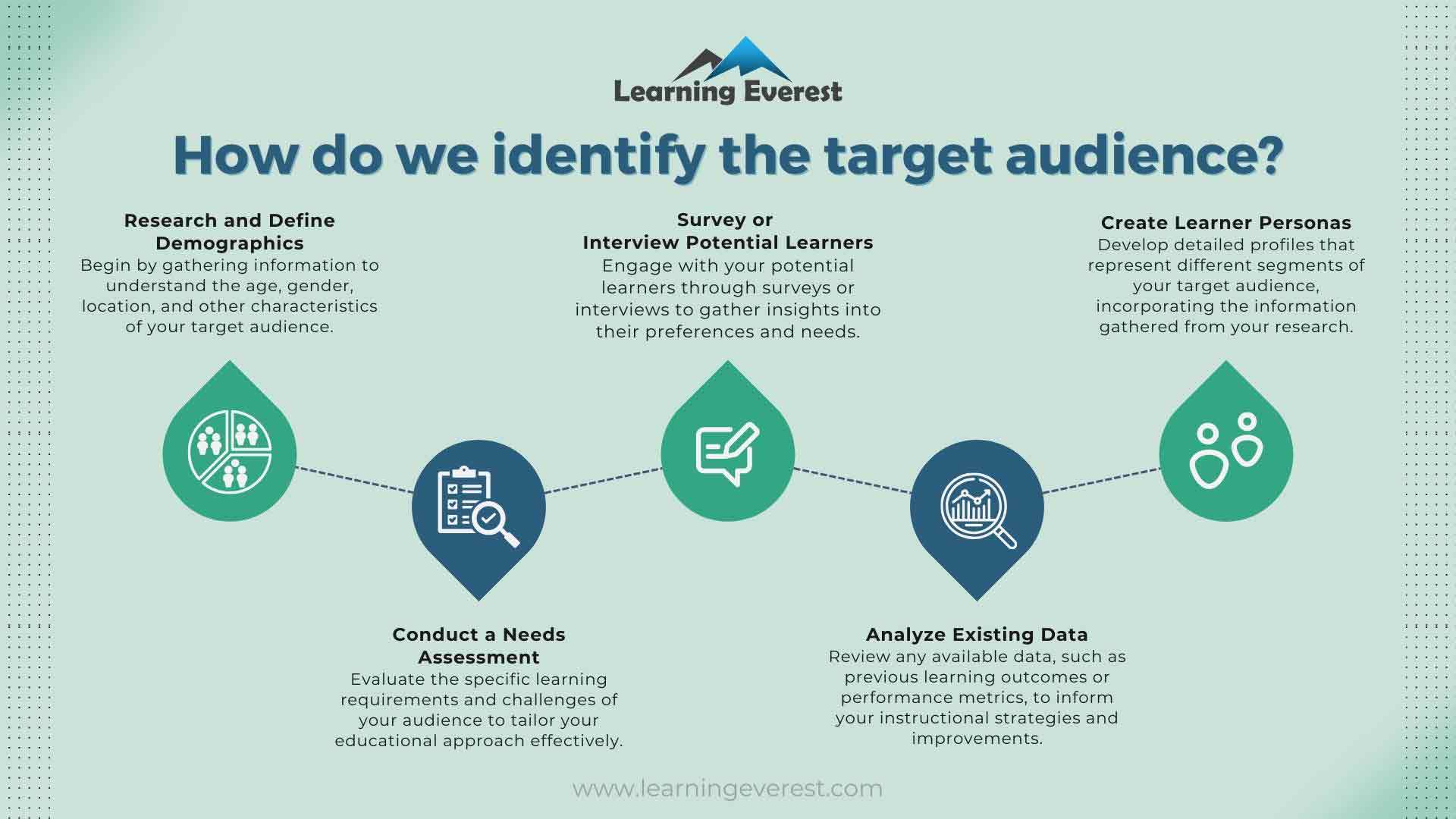
Steps to write a scenario for beginners – Identify target audience
Step 2: Identify learning needs and objectives
Learning objectives are the goals of your course. The objectives depend on the needs of the learners. If you know the target audience well, you can identify their needs accurately and formulate the objectives accordingly. Ask the following questions when identifying learning outcomes:
- What are the learning objectives?
- Are the materials addressing the learning objectives?
- What do you expect the learners to encounter after they complete the course?
- Will the learners learn a new skill or recall previous knowledge?
- What business needs will the course achieve?
- What conditions will the learners be expected to apply their knowledge?
Sometimes, the SMEs may not provide all the answers to your questions. In such cases, it is essential to be able to search the Internet for answers to fill in the gaps if the content allows it. This is possible when information is not client or organization-specific. So, if you want to write objectives to create engaging learning modules, check out our blog on the formula to write learning objectives like a pro!
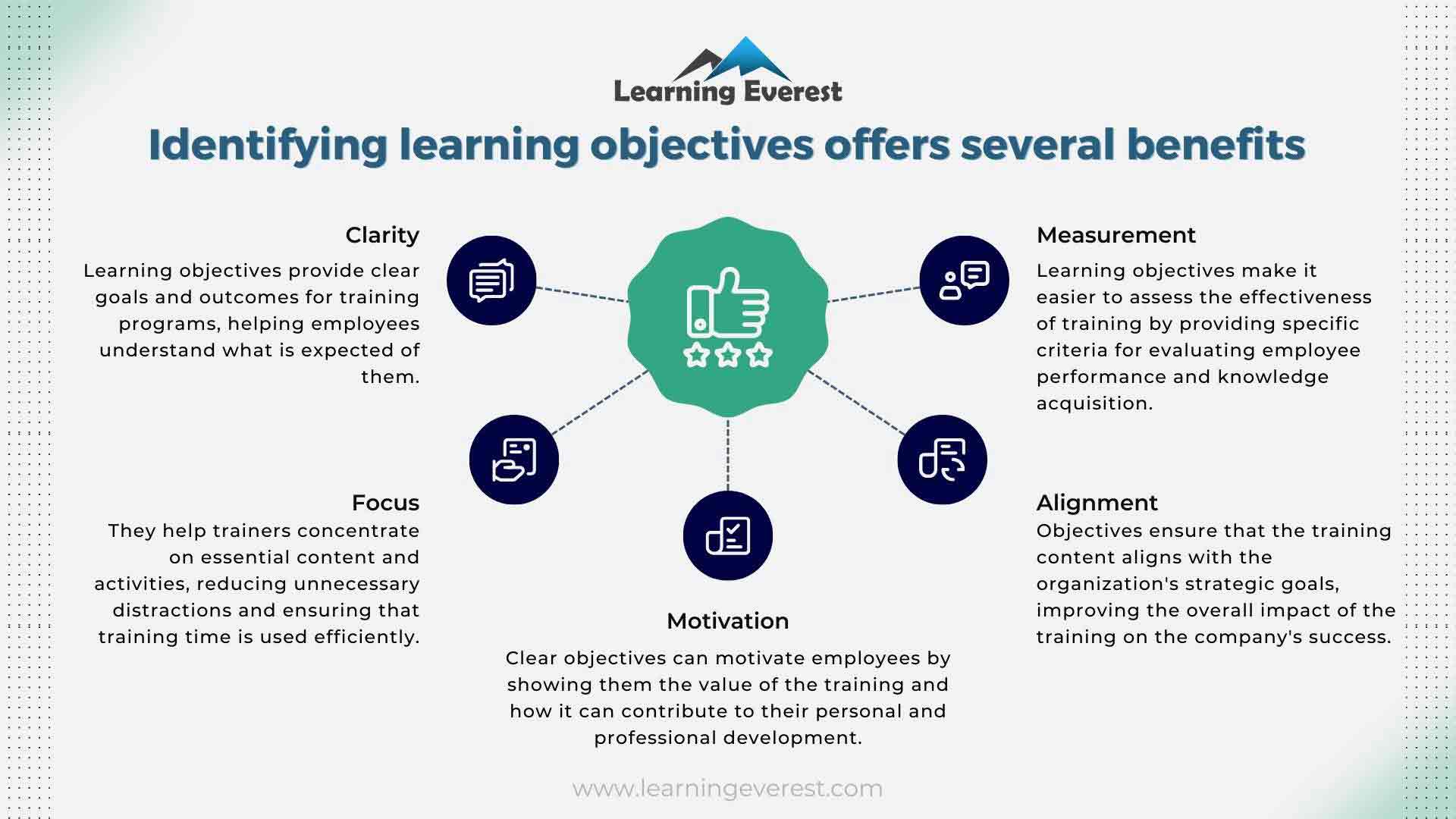
Steps to write a scenario for beginners – Identify learning needs and objectives
Step 3: Select a situation for the scenario
Creating realistic scenarios that act well in training or learning programs takes time and effort. The scenarios must force the learners to employ critical, analytical, and evaluative powers. They must encourage the learners to think creatively and put themselves in the middle of the scenario before acting.
But how should you choose a situation to turn it into a scenario?
- Prioritize critical or challenging situations.
- Determine how involved the learner requires to be in the scenario before creating it.
- A scenario recreates reality within a virtual environment where learners can learn and hone their skills. These practice sessions should compel learners to think and act as they would if they faced real-life situations.
- Determine if there is an innate conflict in the scenario. The primary goal of a scenario should always be to teach learners how to resolve the conflict.
Once you are done writing the scenario, it is essential to review it to look for loopholes or gaps you might have missed in your train of thought. Reach out to your SME with any last questions before they check it. You must ensure that the content comes across correctly and that the scenario is convincing and realistic, thus achieving the required objective. Scenarios have great retention value and hence help in better performance in assessments. Moreover, make the scenarios as real as possible, including the images, videos, and interactivities.
You can also include resources from Wikipedia, forums, and social media groups for discussion. And there should be an overall conclusion to the scenario. Depending on learners’ responses, there can be multiple endings to a scenario, but they, too, must be well-planned, and each path must match the course’s learning objectives. An effective way to plan endings can be starting with the outcome and returning to the beginning.
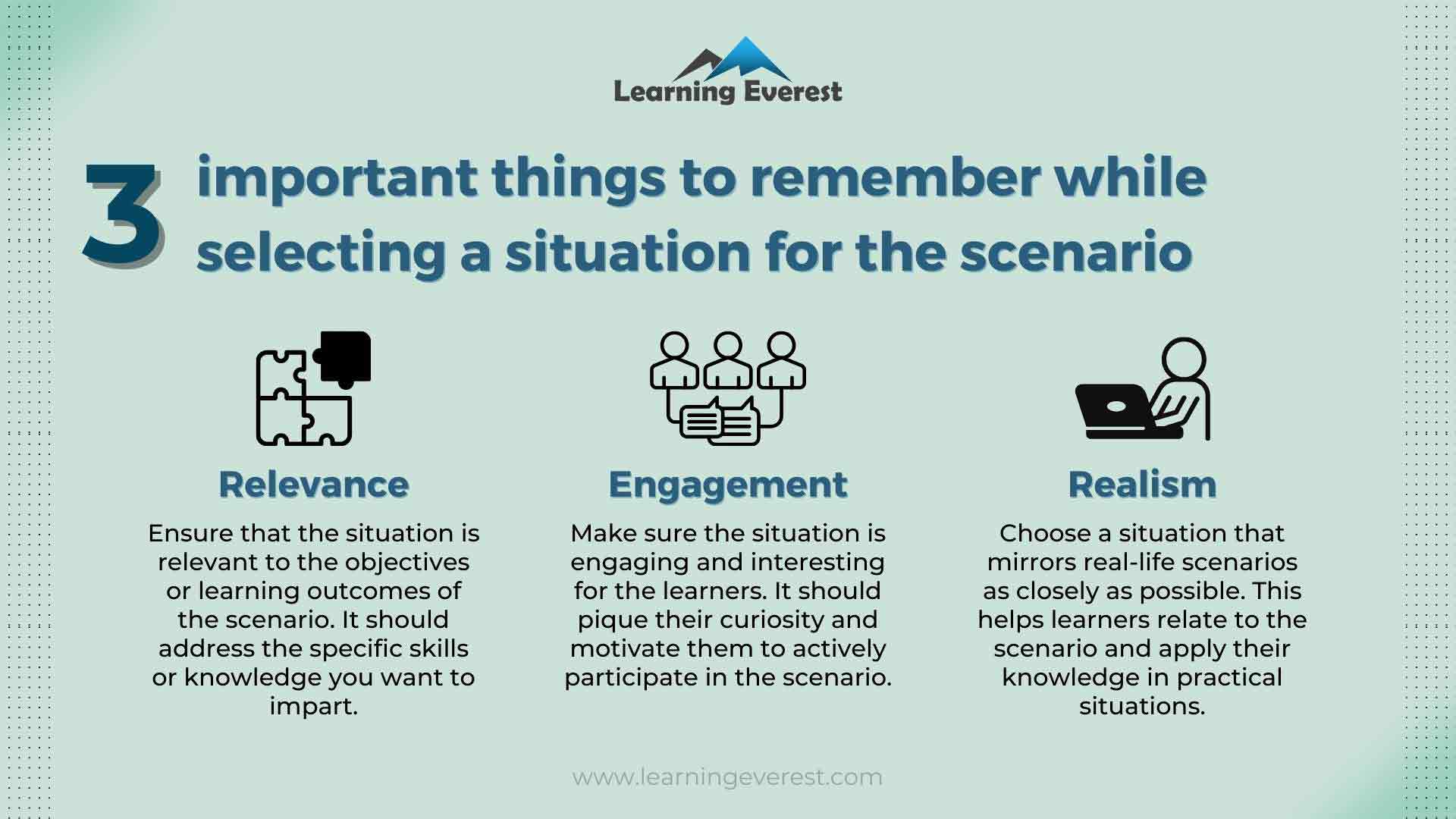
Steps to write a scenario for beginners – Select a situation for the scenario
Step 4: Select the suitable scenario structure
There are several types of scenario structures. Every type is suited for training a particular type of skill. It would help to decide which type will facilitate the most effectively and effortlessly. Here are some different types of scenario structures:
- Skill-Based Scenario: In this scenario, the learner is expected to demonstrate skills and knowledge he has already acquired.
- Problem-Based Scenario: This scenario is ideal for situations where learners must integrate their theoretical and practical knowledge to investigate a conflict. Decision-making, logical reasoning, and critical analyses are integral to these scenarios.
- Issue-Based Scenario: In this type, the learners take a stand on issues, usually with humanitarian perspectives, and explore these to understand how this affects decision-making in professional spheres.
- Speculative Scenario: In this scenario, learners must predict the outcome of an event in the future based on their knowledge and deductions.
- Gaming Scenario: As the name suggests, these scenarios involve using games as learning tools. It makes sure the learners remain interested throughout the learning and training process.
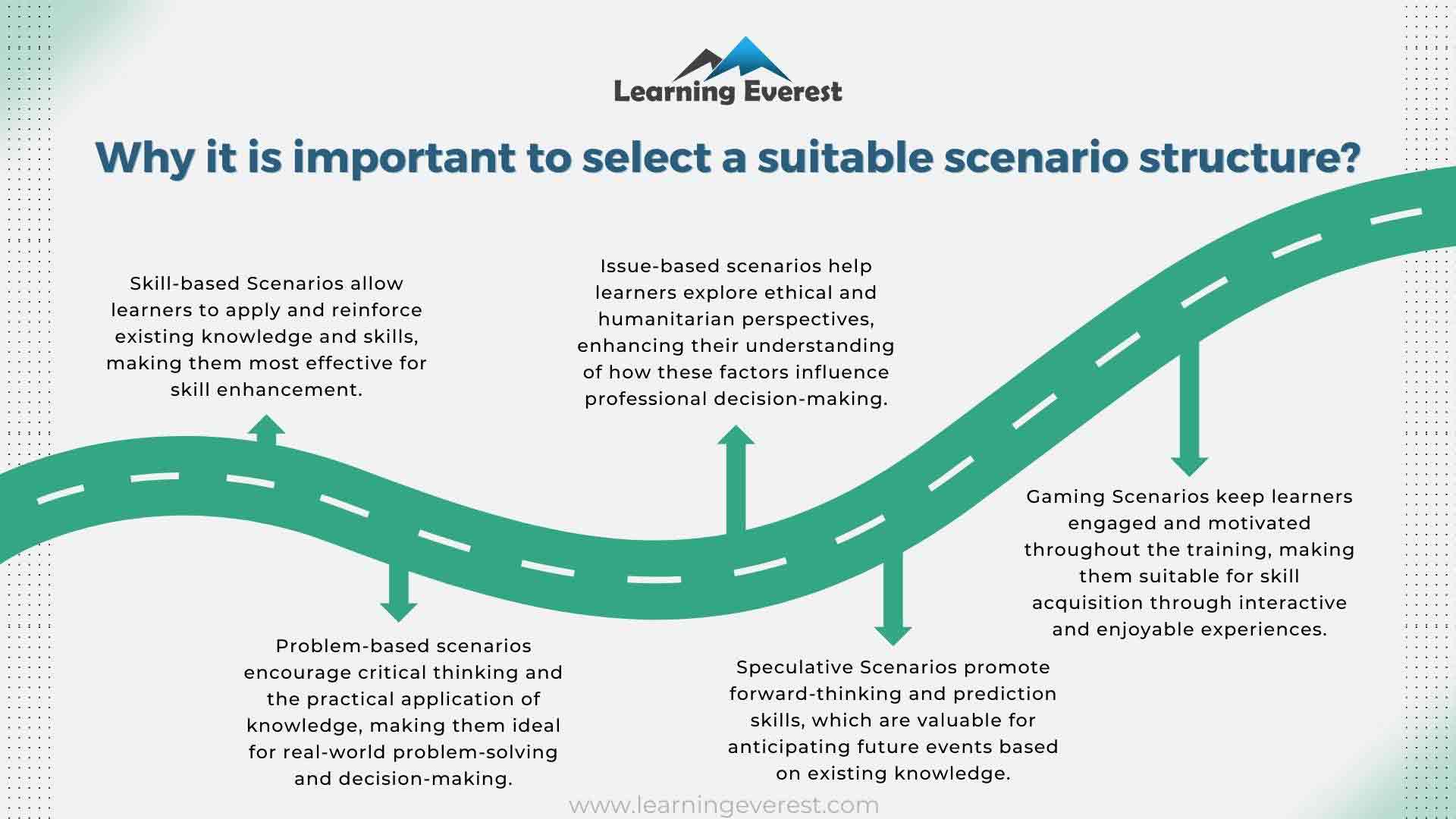
Steps to write a scenario for beginners – Select the suitable scenario structure
Step 5: Design your scenario
Constructing a scenario is not just about crafting an engaging story; you must also ensure it remains instructionally effective. To do so, create a believable and relatable character. The character in the scenario must inspire the learners to change their behavior and learn new skills. So, the characters should walk, talk, act, and dress in a way that learners can relate to. Also, through the characters, explain the mistakes to the learners and suggest alternate ways to arrive at solutions.
Infographics
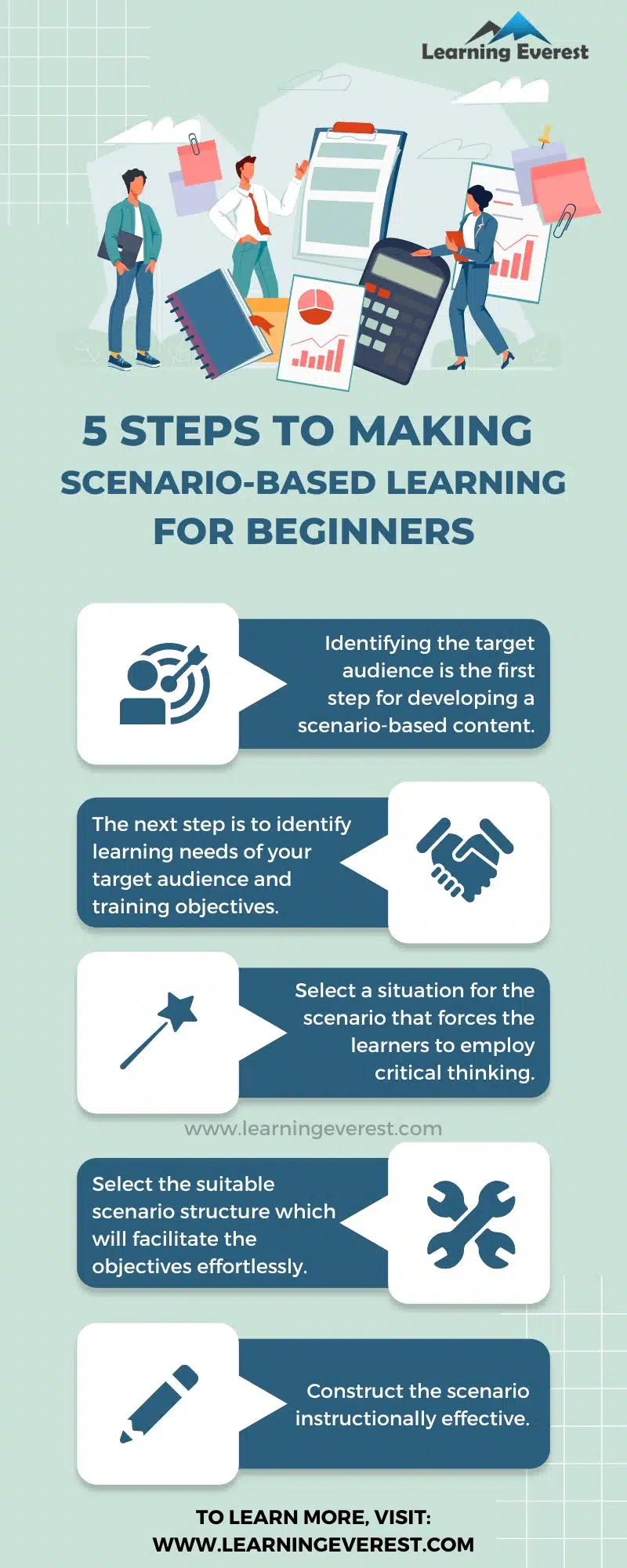
5 Steps to write a scenario for beginners
Knowledge Check!
Conclusion
Furthermore, as scenario-based learning is a very social and dynamic process, it takes time to attain its full potential. As a result, developing a scenario that is well suited to the learner could take a little longer than usual. If you want to know about more ways to create engaging scenario-based learning, check out our blog on a few scenario-based learning examples!
Frequently Asked Questions (FAQs)
How to create scenario-based eLearning?
To create a scenario-based eLearning, designers can follow the five steps including identifying the target audience, identifying learning needs and objectives, selecting a situation for the scenario, selecting the suitable scenario structure, and designing the scenario.
How to identify the target audience for scenario-based eLearning?
To identify the target audience, it is crucial to ask the questions Who are the learners, and their characteristics, what resources and pedagogical strategies to use, what types of learning constraints exist, and what is the timeline for project completion. An SME with hands-on experience can help to find the answers to these questions.
How can you select a scenario for eLearning?
While selecting a scenario, ensure that the situation is relevant to the objectives, engaging and interesting for the learners, and mirrors real-life scenarios as closely as possible.





